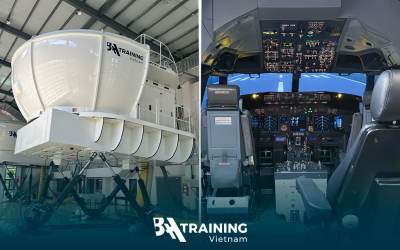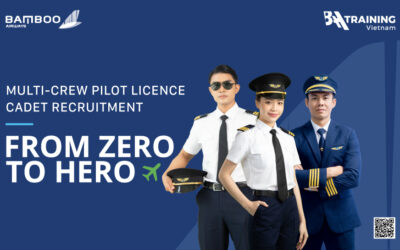A cadet program seems to be an amazing opportunity for a future pilot to pursue the career in aviation. Why? Basically, it is the same ATPL integrated training program for a pilot’s licence except that the main benefit of it is a conditional employment guarantee from the airline even before even starting the training.
What is a cadet program and how does it differ from ATPL integrated?
Let’s take another profession for a comparison to better understand what that means. Imagine that you wish to become a lawyer. The first and most common scenario is: you have just passed your school leaving exams and are about to select the university for your further studies. Are you feeling frustrated? We believe you are. You know that there is quite a long way until you acquire the required education and then comes the search for a vacancy at law companies. You will be sending your CVs, going to job interviews and if you are lucky, you might quickly get a job in the competitive market. But in the second scenario you would get a guarantee of a job position waiting for you immediately after you finish your studies. No worries, no time wasting. You just need to work hard, pass your exams and the vacancy is waiting for you! Which scenario would you choose if it was possible in job market of law?
Let’s get back to aviation. The path is the same if you wish to become a pilot: choose aviation academy offering an ATPL integrated training program, acquire the licence, send tons of CVs and wait… However, the aviation industry is amazing at this point as it actually offers a second scenario with a job guarantee! This is exactly what being a cadet means.
Obviously, an employer, in this case an airline, does not grant an employment guarantee to anyone wishing that. It takes a bit longer to enrol on a cadet program than on an independent ATPL integrated course.
How? What are requirements?
Firstly, same basic requirements, as set by the EASA standards for ATPL integrated course, apply to the candidates. The candidates have to be 18 years old or over and must be graduated from a secondary (high) school in order to start the training (it is allowed to apply a bit earlier as the process takes some time). One must be able to acquire an EASA 1st class medical certificate that is a proof of the best physical condition a pilot needs in order to start flying an aircraft. Additionally, the knowledge of Mathematics, Physics and English is of key importance. School and exam grades of these disciplines are evaluated additionally during assessments at the academy. One should keep in mind that it is required to pass at least the level 4 of the ICAO English test before the flying phase begins.
Moreover, the airline might set additional requirements for the candidate. For example, one might need an unrestricted right to live and work in the European Union in order to work for a European airline. Passing grades of assessments might be set higher than aviation academy requires for the normal ATPL integrated course as the airline seeks for the best candidates to join its team of pilots. The additional steps of the assessment process might be introduced for the cadet program. Usually there is an assessment or an interview with the representatives of the airline.
Personal competencies and aptitude are checked during the assessment process when special tests and interviews developed by the selection commission of the academy and the airline are conducted.
Steps of preselection process for the cadet program at BAA Training:
- A candidate obviously must contact the academy. One will get a personal manager and will be introduced with terms and conditions, also will have an opportunity to get answers to all possible questions.
- The next step is documents‘ screening after which a date for the assessment is set.
- A personality assessment – Profile XT – is the first test. Find out more about the test and why it is necessary here.
- An aptitude assessment – Compass – is widely used by aviation academies. It is a computerised test conducted using a computer with a joystick and pedals. 6 parameters are measured: control, slalom, memory, math, orientation and task management. Additional TechTest is used for knowledge in Physics.
- A written English test indicates the candidate‘s ability to read and write in English. Speaking part is measured during an interview.
- The structural interview is conducted at the academy.
- Suitable candidates with the results in accordance with the airline‘s requirements are presented to the airlines and then invited for the final assessment/interview.
- The final step is the airline‘s assessment, interview or both parts combined. It might contain a group exercises or one-to-one interviews.
Why does it take longer to enrol on a cadet program?
As mentioned previously, the airline seeks for the most suitable candidates to join its team of professional pilots, therefore, the additional steps apply in the preselection process. The airline’s involvement is the reason why the process takes longer. The advice for those considering enrolling on a cadet program is to start preparing as early as possible. There is no reason to wait for the last minute. As wise people say – winners do not wait for chances, they take them.







